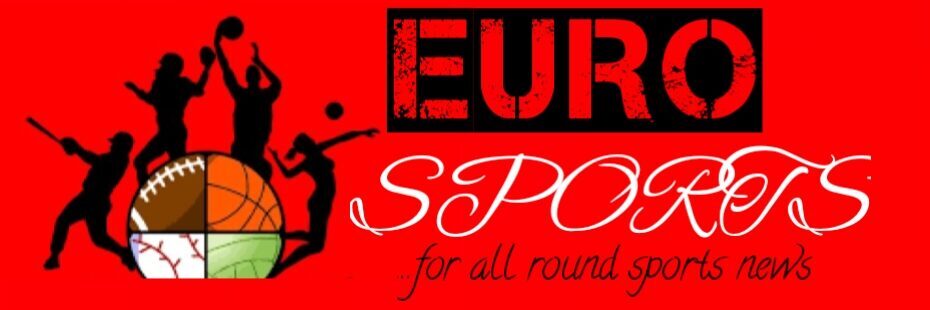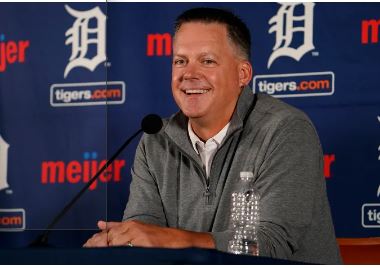It sounds like the Detroit Tigers are gearing up for the 2024 MLB draft with a focus on finding value and possibly making underslot deals to maximize their draft strategy. With the eleventh pick, they’re in a position to select from the second tier of talent in a draft class that’s seen as somewhat mediocre beyond the top few prospects.
In previous coverage, the Tigers have outlined their approach to potentially reach on a player with a lower price tag if they plan to invest heavily in high school prospects later in the draft, similar to their strategy last year. This year, without a top pick, they’ll rely on their scouting expertise to make a smart choice from a broader pool of players.
Here’s a preview of what to expect:
1. First Round Options: The Tigers will likely consider several college bats and possibly some high school talents who may fall within their range. They’ll prioritize players who fit their draft strategy and offer good value at the eleventh pick.
2.Second Round Picks: In the second round, they have the opportunity to find hidden gems or players who may have slipped from the first round. This could include prospects who offer high potential but may come with some risk or are undervalued by other teams.
Overall, the Tigers’ draft strategy seems to revolve around maximizing their draft pool and selecting players who offer the best combination of talent and value. Keep an eye out for more detailed scouting reports as the draft approaches.
OF Carson Benge, Oklahoma State
Benge has quickly become a standout player on my radar who could be a viable option for the Tigers in the first round. He showcases versatility by excelling both as a pitcher and a position player at Oklahoma State, although his potential as a right fielder offers higher upside due to his strong arm and powerful bat.
Despite his slightly smaller stature at 6’1”, Benge possesses impressive strength and athleticism. While not a prototypical “power/speed guy,” his uppercut swing taps into his core and wrist strength, making him a formidable hitter. Scouts have noted his prowess in hitting metrics, particularly exit velocity, making him a target for teams like the Orioles who value such attributes.
Benge’s plate presence is exemplary, boasting chase rates below 20% and contact rates nearing 80%, indicating both good decision-making and execution at the plate. Transitioning to facing high-minors pitchers consistently throwing breaking balls low in the zone will be a test, but early indicators are positive.
Defensively, Benge primarily plays right field but could handle center field if needed, leveraging his offensive strengths. His speed, though not exceptional, hovers between average and above-average, supporting his defensive versatility.
In summary, Benge’s athletic prowess, multi-faceted skills, and intelligence at the plate make him an attractive prospect, fitting the profile of players preferred by the Tigers’ scouting approach. His potential to sign with a slightly lower bonus could also enable the Tigers to allocate resources strategically across the draft. Unless a surprise prospect falls to them, Benge seems like a promising fit for the Tigers’ first-round pick.

LHP Cam Caminiti
Cam Caminiti has emerged as a notable prospect linked to the Detroit Tigers in several mock drafts leading up to the 2024 MLB draft. At just 17 years old and committed to LSU, Caminiti reclassified to join this year’s draft class, showcasing impressive development and potential that could see him selected within the first half of the first round.
As a left-handed pitcher, Caminiti offers a compelling starter’s projection with a diverse arsenal. He features a powerful fastball that consistently hits the mid-90s and can touch 98 mph, with potential to increase as he matures. His fastball’s ability to generate swing-and-miss at the top of the zone makes it a formidable weapon. Additionally, Caminiti possesses a slider that stands out among his secondary pitches, while his curveball and changeup show promise but need refinement.
Despite being 6’2” tall, Caminiti’s pitching repertoire and physical attributes make him a strong candidate for early selection. Scouts appreciate his mechanics, which are relatively polished for a high school pitcher, suggesting he primarily needs more experience and coaching to refine his secondary offerings and consistency.
While his breaking balls may not yet match the elite level, Caminiti’s overall package as a left-handed pitcher with velocity and potential for growth makes him a compelling choice in the early to middle first round. His availability to the Tigers will depend on how teams ahead prioritize pitching versus other positional needs, potentially making him a key consideration for Detroit as they evaluate their draft strategy.
OF James Tibbs III, Florida State
Tibbs appears to be a highly accomplished college hitter who has shown consistent production since his freshman year at Florida State. His ability to perform well in the Cape Cod League, known for its challenging pitching environment, further underscores his readiness for professional baseball. With a slash line of .303/.390/.472 in a wooden bat league, Tibbs has demonstrated his hitting prowess and potential to transition smoothly through the minor leagues.
At the plate, Tibbs’ value is centered on his exceptional hitting ability and potential for power. While opinions vary on his power potential, he has shown the capability to drive the ball effectively and handle premium velocity without backing off. However, concerns linger about his ability to consistently tap into his power and handle advanced breaking pitches at higher levels.

Defensively, Tibbs profiles as a below-average left fielder with limited versatility to play other positions due to his arm strength and speed. His future defensive value could diminish further if he eventually moves to first base, placing added pressure on his offensive contributions.
In evaluating Tibbs as a draft prospect, there are reservations about his fit for the Tigers at the eleventh overall pick. While he possesses a reliable bat, his defensive limitations and potential ceiling as a bat-first player may not align with Detroit’s draft priorities, especially considering his perceived lack of elite power or plate discipline.
Recent mock drafts suggest Tibbs could draw interest from teams like the Pirates, potentially as part of an underslot strategy. However, if available, the Tigers may opt to pursue prospects offering a more well-rounded skill set or higher upside, rather than focusing solely on Tibbs’ polished hitting abilities.
Ultimately, while Tibbs is expected to have a solid professional career, his draft position could depend on how teams balance his offensive prowess with concerns about his defensive profile and overall ceiling.
Second round possibilities
LHP Josh Hartle, Wake Forest
Hartle emerged as a highly touted left-handed pitcher during the 2021 draft cycle, drawing attention for his pitching intelligence and smooth delivery. Initially expected to be a first-round pick out of high school, he opted for college at Wake Forest, renowned for its pitching development program. However, Hartle’s collegiate career has been inconsistent, with significant fluctuations in performance over his three seasons.
As a freshman, Hartle struggled with an ERA approaching six and modest strikeout numbers, indicative of early adjustment challenges. He rebounded strongly as a sophomore, showcasing dominant form with over a strikeout per inning and high draft projections. Unfortunately, his junior year has seen regression, marked by increased hits allowed and diminished effectiveness of his pitches.
Hartle’s fastball sits in the low 90s without significant velocity gains since high school. His repertoire includes a diverse array of pitches — two types of fastballs, a slider, curveball, cutter, and changeup — highlighting his versatility and pitch mix. When his command and pitches are on, Hartle has demonstrated the ability to baffle hitters with his pitching acumen.
Despite his recent struggles, Hartle remains intriguing to teams willing to invest in his potential. His draft stock has dipped, but his arsenal and previous success indicate untapped potential if he can refine his command and regain consistency. The Tigers, known for their pitching development under Gabe Ribas, could view Hartle as a post-hype sleeper worth nurturing back to form.
If drafted by Detroit, Hartle would likely undergo refinement to streamline his pitch selection, improve fastball command, and restore effectiveness to his cutter. While he may not be the top-tier prospect he once appeared, there’s optimism that with proper development, Hartle could evolve into a pitcher capable of inducing weak contact and becoming a valuable asset in the professional ranks.
RHP Dax Whitney, Blackfoot (ID)
Dax Whitney’s ascent on draft boards, particularly as a high school pitcher from Idaho, makes him an intriguing option for the Tigers in the third round. His recent improvements, including a notable increase in fastball velocity — now sitting in the low-to-mid 90s — have positioned him as a late-riser in the draft rankings. Whitney’s athletic 6’4”, 190-pound frame leaves ample room for physical development, which, combined with his simple, clean mechanics, bodes well for his future growth.
**Pitching Profile:**
– **Fastball:** Whitney’s fastball has seen an eight-tick boost over the past two years, thanks to his clean, somewhat violent delivery. The pitch exhibits good rise and strong spin numbers, making it a potential weapon at the top of the zone. His fastball’s velocity could climb even higher with proper conditioning and strength training.
– **Secondary Pitches:** Whitney’s secondary offerings are currently a work in progress. He has been reported to have two breaking balls, possibly a slider and a curve, both in the upper-70s with good spin rates. MLB Pipeline and FSS offer slightly different takes on his breaking ball arsenal, with some sources highlighting a sweeper with variable movement. Additionally, Whitney throws a changeup that shows flashes of promise but needs refinement to become a reliable out pitch.
**Development Potential:**
– **Physical Development:** With his frame, there is significant potential for muscle gain and velocity increase, potentially touching 98 mph in the future. The Tigers’ strong development system could focus on enhancing his fastball’s effectiveness and solidifying his secondary pitches.
– **Pitch Refinement:** The Tigers’ pitching coaches might prioritize sharpening Whitney’s breaking ball into a consistent shape. Depending on its development, they could opt for a low-80s cutter if it trends towards a sweeper or a split change if it leans towards a harder gyro slider.
**Projection and Fit:**
– **Long-Term Development:** Whitney’s journey may be slow, but his raw tools and the Tigers’ track record with pitching development make him an ideal candidate for the organization’s system. Drafting players like Whitney in the third to fifth rounds has historically allowed teams to develop them into rotation mainstays, a strategy that aligns well with the Tigers’ approach.
Overall, Whitney represents a high-upside, high-risk investment that could pay dividends with the right development. The Tigers’ ability to mold young pitchers could see Whitney emerge as a key component of their future rotation.

